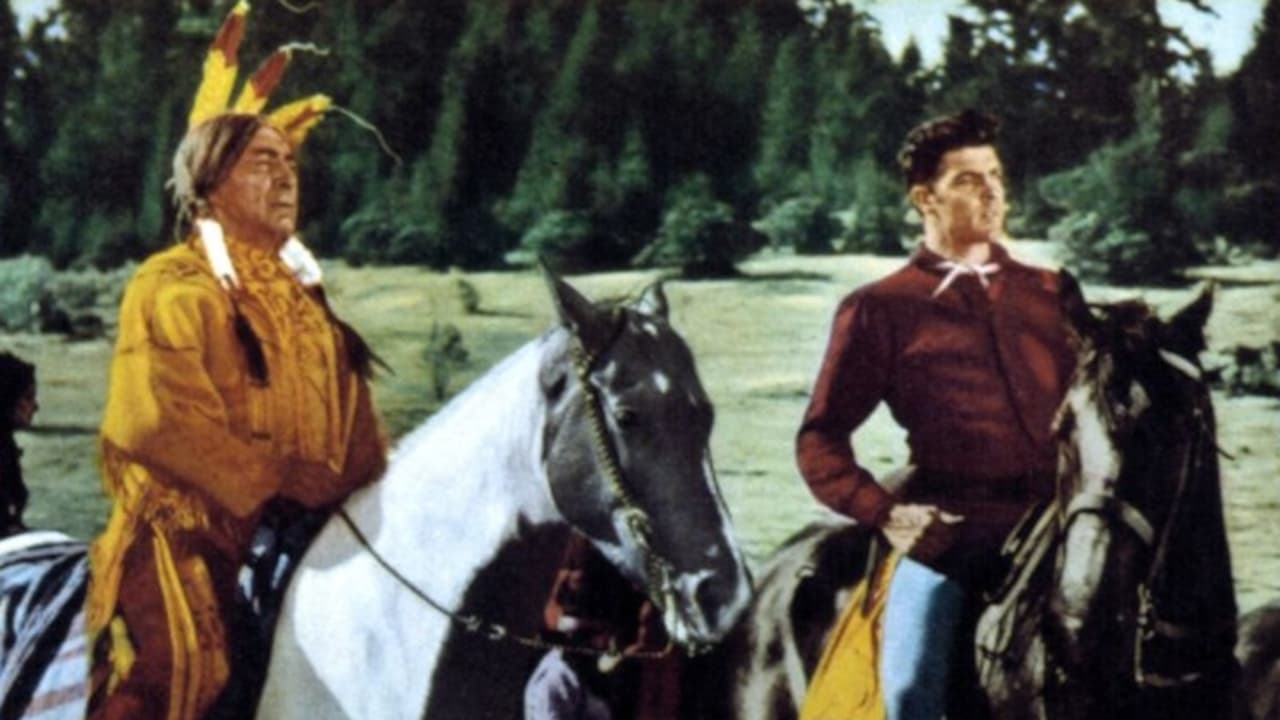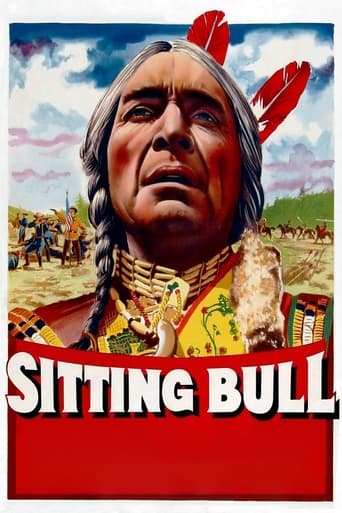

Seeing "Sitting Bull" somewhat by accident on a "retro" TV channel, I sat through the whole thing, partly in dumbfounded amazement at another Hollywood butchering of history, partly in awe of a superlative cast trying really hard with such a poor script.During the movie, I was also struck by the lush score. Naturally, the TV network didn't have the decency to show all the credits, but to my ear it sounded like the outstanding work of Raoul Kraushaar -- and praise all the gods of technology for IMDb, I was right.In my opinion, he is a terribly under-rated composer. Even the cheapest Allied Artists movies attain the ranks of quality when he wrote the score.J. Carroll Naish as the title character is another under-rated actor. That is, he does not seem to be known among viewers although apparently he was never out of work. He almost always played some accented character, some Latin or European or, as in this case, "Indian" character. And he was almost always extremely believable.The rest of the cast, from the excellent Dale Robertson to the excellent John Hamilton, were almost uniformly perfect.
... View MoreNo western hero who was in the military ever took more on himself than did Dale Robertson in Sitting Bull. Not even Errol Flynn who buried Confederate gold in violation of orders in Virginia City got himself in as much trouble as did Major than Captain Robertson did here.This B film from MGM is yet another version of the events of surrounding the Little Big Horn battle where Douglas Kennedy as Custer got himself surrounded and massacred by some angry Sioux Indians. This version does show the Indian side of the events, how badly treated they were on reservations, how the whites once word of gold being discovered in their sacred Black Hills of Dakota territory systematically broke the treaties signed. Yet in fact the film went a bit overboard with presenting the Indian side and took great liberty with the facts.Dale Robertson's an army major who zealously follows his orders about respecting the Indian rights, to the dismay of former General now Colonel George Armstrong Custer. Robertson's maverick tendencies wouldn't be liked in the army in any event, but his fiancé Mary Murphy who is General John Litel's daughter wants an upwardly mobile career man and Robertson doesn't look like a good bet. For standing on his beliefs Robertson loses her to newspaper reporter William Hopper.But Dale gets himself in an even bigger jackpot. He's got an agreement with his former commander Ulysses S. Grant who is now president of the United States, the big chief of all the white folks. But when Custer moves prematurely and gets massacred and troops are sent on reprisal, Robertson does a very daring and potentially foolish thing to keep the peace process alive. That's the essence of our story.Which of course never did happen. Neither did Ulysses S. Grant as played by John Hamilton on hiatus from the Superman series ever come west to negotiate with J. Carrol Naish as Sitting Bull. That's the biggest flaw in this film.Murphy's character doesn't ring true either. From a woman who makes no bones about her desire for an upwardly mobile man, she does an about face and would make Tammy Wynette proud if Tammy had in fact ever seen Sitting Bull.The film's heart is the in the right place, but the rest of it is out to lunch.Though I will say one thing. If what I read is true about Mary Murphy's bout with Montezuma's revenge on location for this movie, she may have given one of the great performances of all time just getting through this film without a hint on screen.
... View MoreTCM played this last night. It's cheap and shallow Saturday matinée stuff as the other comments suggest. I noticed two things: the day-for-night shots look good but the director(s) rarely used closeups. Most of the shots are long or waist shots, or two shots.This was an early CinemaScope production and perhaps they were limited by the lenses they had (the lenses were not plentiful at this time, especially to non- Fox producers). "Sitting Bull" was the first independent production to be shot in CinemaScope. This was W. R. Frank's last feature film production; he was a Minneapolis, MN theatre owner. The world premiere was held August 19, 1954 in Sioux Falls, SD. What did the Sioux Falls cinema-goers think of this picture being shot in Mexico?! It opened October 7, 1954 at the State Theatre in Minneapolis and Paramount in St. Paul. Both of the cities' film critics, Will Jones and Bill Diehl, hated the film. Comment cards were handed out at both theatres. A trade magazine item in April 1953 said that Frank had set May 20 as the production's start date, but decided to put it off until July when CinemaScope equipment was available. As early as 1950 actors such as Victor Jory were announced as being signed for this production. Later, names such as Boris Karloff and Dennis Morgan were mentioned in the trade press.
... View MoreThe best thing that can be said about this film is that it had good intentions. What makes of it almost a camp movie is the unreal, primitive, simplistic way that Sitting Bull, the battle of Little Big Horn, and all events related to it are presented. There are no qualms here about changing historical facts and the unreal attitudes of Major Bob Parrish (Dale Robertson) and also of Sitting Bull are very hard to accept. It was much more complex than that, as it can be seen on the most accurate film made so far about it "Son of The Morning Star". The fact that it was made on a big budget, Cinemascope, and has good battle scenes makes it easier to see. It also had the technical advice of "Iron Eyes Cody" who sure knew a lot about it, but probably kept most of it to himself.
... View More